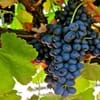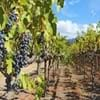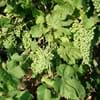Life Span
Perennial
Perennial
Origin
Not Available
Western United States, Northwestern United States, California, Canada
Types
PRIMOCANE RED RASPBERRIES ,FLORICANE RED RASPBERRIES
Black Maple, Mountain Maple,
Norway Maple
Habitat
Forests, Mountains, Tree canopies
Riverbanks, Stream side
USDA Hardiness Zone
4-8
5-9
Sunset Zone
A1, A2, A3, 1a, 1b, 2a, 2b, 3a, 3b, 4, 5, 6, 7, 8, 9, 10, 11, 12, 13, 14, 15, 16, 17, 18, 19, 20, 21, 22, 23, 24
4, 5, 6, 7, 8, 9, 10, 11, 12, 13, 14, 15, 16, 17
Habit
Upright/Erect
Oval or Rounded
Flower Color
White
Yellow, Red, Green
Flower Color Modifier
Bicolor
Bicolor
Fruit Color
Red
Yellow, Red, Green, Sandy Brown
Leaf Color in Spring
Green
Light Green, Yellow green
Leaf Color in Summer
Green
Green
Leaf Color in Fall
Green
Gold
Leaf Color in Winter
Light Green
Not Available
Leaf Shape
Toothed
Irregular
Plant Season
Spring, Summer, Fall
Spring, Summer, Fall
Sunlight
Full Sun, Partial Sun
Partial Sun, Partial shade
Type of Soil
Loam, Sand
Clay, Loam, Sand
The pH of Soil
Acidic, Neutral
Acidic, Neutral, Alkaline
Soil Drainage
Well drained
Average
Bloom Time
Spring, Summer
Early Spring, Spring
Tolerances
Drought
Not Available
Where to Plant?
Container, Ground, Pot
Ground
How to Plant?
Suckers
Seedlings
Plant Maintenance
Medium
Medium
Watering Requirements
Average Water Needs
Do not let dry out between waterings, Keep ground moist, Requires regular watering
In Summer
Lots of watering
Lots of watering
In Spring
Moderate
Moderate
In Winter
Average Water
Average Water
Soil pH
Acidic, Neutral
Acidic, Neutral, Alkaline
Soil Type
Loam, Sand
Clay, Loam, Sand
Soil Drainage Capacity
Well drained
Average
Sun Exposure
Full Sun, Partial Sun
Partial Sun, Partial shade
Pruning
Remove damaged leaves, Remove dead branches, Remove dead leaves
Remove branches, Remove damaged leaves, Remove dead branches, Remove dead leaves, Remove dead or diseased plant parts
Fertilizers
All-Purpose Liquid Fertilizer
All-Purpose Liquid Fertilizer, Nitrogen
Pests and Diseases
Red blotch
Red blotch
Plant Tolerance
Drought
Not Available
Flowers
Insignificant
Yes
Flower Petal Number
Single
Single
Foliage Texture
Medium
Coarse
Foliage Sheen
Matte
Matte
Attracts
Birds, Butterflies
Bees, Birds, Flying insects, Insects
Allergy
Abdominal pain, breathing problems, Diarrhea, Eczema, Fainting, Itchiness, Nausea, Vomiting, wheezing
Pollen
Aesthetic Uses
bank hedging, Cottage Garden, Slopes hedging
Not Available
Beauty Benefits
Not Available
Improve hair condition
Environmental Uses
Air purification
Air purification, Nesting sites for birds, Shadow Tree, Wildlife
Medicinal Uses
anti-inflammatory, Anti-oxidant, Cancer, Improve heart health, Liver Protection, Skin Whitening and Pigmentation Medicine, Weight loss
Tonic, tuberculosis
Part of Plant Used
Fruits, Leaves, Root
Flowers, Sap, Tree trunks
Other Uses
Jam, Jelly, Used As Food, Used for its medicinal properties
Application in Furniture, Basketary, Can be made into a herbal tea, Decorative veneers, flooring, paneling, Edible syrup, Fibre, Making piano frames, Used as firewood, Used as fuel, Used in salads
Used As Indoor Plant
No
No
Used As Outdoor Plant
Yes
Yes
Garden Design
Edible, Fruit / Fruit Tree, Hedges
Feature Plant, Shade Trees
Botanical Name
RUBUS 'Autumn Bliss'
ACER macrophyllum
Common Name
Red Raspberry
Big-leaf Maple, Oregon Maple, Pacific Maple
In Hindi
रूबस idaeus
बड़ा पत्ता मेपल के पेड़
In German
Himbeere
Big Blatt Ahornbaum
In French
Rubus idaeus
Grande feuille Érable
In Spanish
Rubus idaeus
Gran hoja del árbol de arce
In Greek
σμέουρο
δέντρο Maple μεγάλο φύλλο
In Portuguese
Rubus idaeus
Árvore de bordo Folha grande
In Polish
Rubusidaeus
Duży liść klonowy
In Latin
Rubus idaeus
Big Maple folia ligni
Phylum
Magnoliophyta
Magnoliophyta
Class
Magnoliopsida
Magnoliopsida
Family
Rosaceae
Aceraceae
Clade
Angiosperms, Eudicots, Rosids
Angiosperms, Eudicots, Rosids
Tribe
Rubeae
Not Available
Subfamily
Rosoideae
Not Available
Number of Species
Not Available
Properties of Red Raspberry and Big leaf Maple
Wondering what are the properties of Red Raspberry and Big leaf Maple? We provide you with everything About Red Raspberry and Big leaf Maple. Red Raspberry has thorns and Big leaf Maple doesn't have thorns. Also Red Raspberry does not have fragrant flowers. Red Raspberry has allergic reactions like Abdominal pain, breathing problems, Diarrhea, Eczema, Fainting, Itchiness, Nausea, Vomiting and wheezing and Big leaf Maple has allergic reactions like Abdominal pain, breathing problems, Diarrhea, Eczema, Fainting, Itchiness, Nausea, Vomiting and wheezing. Compare all the properties and characteristics of these two plants. Find out which of these plant can be used as indoor plant. If you are interested to decorate your house and garden, find out aesthetic uses, compare them and select the plant which will beautify your surrounding. Along with beautification, try comparing medicinal and edible uses of Red Raspberry and Big leaf Maple and you can choose the plant having best and most benefits.
Season and Care of Red Raspberry and Big leaf Maple
Season and care of Red Raspberry and Big leaf Maple is important to know. While considering everything about Red Raspberry and Big leaf Maple Care, growing season is an essential factor. Red Raspberry season is Spring, Summer and Fall and Big leaf Maple season is Spring, Summer and Fall. The type of soil for Red Raspberry is Loam, Sand and for Big leaf Maple is Clay, Loam, Sand while the PH of soil for Red Raspberry is Acidic, Neutral and for Big leaf Maple is Acidic, Neutral, Alkaline.
Red Raspberry and Big leaf Maple Physical Information
Red Raspberry and Big leaf Maple physical information is very important for comparison. Red Raspberry height is 120.00 cm and width 120.00 cm whereas Big leaf Maple height is 3,048.00 cm and width 120.00 cm. The color specification of Red Raspberry and Big leaf Maple are as follows:
Red Raspberry flower color: White
Red Raspberry leaf color: Green
Big leaf Maple flower color: Yellow, Red and Green
- Big leaf Maple leaf color: Light Green and Yellow green
Care of Red Raspberry and Big leaf Maple
Care of Red Raspberry and Big leaf Maple include pruning, fertilizers, watering etc. Red Raspberry pruning is done Remove damaged leaves, Remove dead branches and Remove dead leaves and Big leaf Maple pruning is done Remove branches, Remove damaged leaves, Remove dead branches, Remove dead leaves and Remove dead or diseased plant parts. In summer Red Raspberry needs Lots of watering and in winter, it needs Average Water. Whereas, in summer Big leaf Maple needs Lots of watering and in winter, it needs Average Water.





